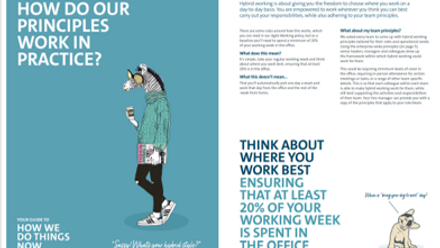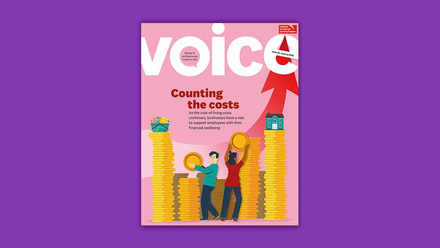Returning to the office – and for how many days each week – is a debate that’s grumbled and rumbled on for the past four years and continues to be a workplace challenge.
At one extreme you have former Cabinet minister Jacob Rees-Mogg leaving printed notes on absent civil servants’ desks, urging them to be in the office five days a week. At the other, some global corporates are closing offices and slashing office space making a return to the office harder, unless you book a desk well in advance due to reduced space.
The differences in the way we work continues to vex organisations big and small. Before the pandemic, 4.7% of UK employees worked from home. In 2023, 44% of UK employees engaged in some form of remote working.
Some high-profile employers, such as Amazon, are issuing mandates, arguing that being in the office five days a week brings teams together, increases productivity, innovation and collaboration, and fosters a better corporate culture.
And many CEOs don’t seem ready to settle for two or three days in the office. The KPMG CEO Outlook survey found that 64% of leaders globally, and 63% of those in the UK, predicted a full return to in-office working by 2026. That’s not far away.
Meanwhile, years of post-pandemic data have also shown that remote and hybrid working works. Two or three days in the office is a bit of a sweet spot. Researchers say that employees retain productivity and can help companies drive profits. There are also the intangible factors that foster employee loyalty, such as better work-life balance. Over the past few years, many CEOs have toyed with the idea of full office returns but pulled back due to this data and following a strong pushback from their workforce.
There's another factor too: since April, requesting flexible working has been a default right from day one of employment.
Business Secretary Jonathan Reynolds said that the government wants to end the "culture of presenteeism", and said there were "real economic benefits" to people working from home.
So, are some organisations finding themselves between a rock and a hard place, caught between the wishes of a CEO/Board and the different preferences of a workforce. How can internal communications help to smooth out the issue? Here are three considerations:
- A mandated return isn’t necessarily right for every organisation, but clarity about senior-level and business expectations is. Can the language of ‘mandate’ be toned down? Are you transparent about the reasons why you’re stipulating X number of days in the office each week, are you asking employees for their preferences, and sharing the data behind decisions? Are your return-to-work messages and policy clear enough and do they ‘speak truth’?
This year’s IoIC IC Index IC Index IoIC, The Institute of Internal Communication found that there’s been a distinct and damaging lack of employee trust in how the ‘return to office’ message has been communicated to employees. While many employers cited collaboration as the main reason they wanted people to come back, many employees think that the real motivation was management wanting oversight of working hours.
Trust has always been an essential ingredient to a healthy workplace. And in the context of so much continuing business transformation, change and economic uncertainty, it’s more important than ever.
According to the Index report, employees want organisations to improve trust by being better at communications, by being clearer about the rationale for change and more honest about its impacts, and listening to their views.
- Understanding our audiences is more complex – but necessary. Fully remote workers are the least engaged in the workplace. Hybrid workers are more engaged. Those who always work from an office are somewhere in the middle. With a wider variety of working arrangements and environments in place at one time, communicators need to consider comms plans, strategies and messages that are as varied as the people we’re trying to connect with. Does your employee research ask enough questions about the comms that your employees want and their varying circumstances? This may mean rethinking your approach and embracing more personalisation of content and channels by location ‘type’, as well as geographical, divisional and banded roles.
- Encouraging ties and connections. A big challenge for organisations is the increasing divide developing between remote and non-remote workers. Some 44% of hybrid/in-office employees say they have a weaker relationship with remote colleagues. They are just far closer to the people that they see in the office more regularly and have face-to-face meetings with. If this divide is allowed to grow, it can start to harm team cohesion, group collaboration and team culture.
IC’s role in connecting dispersed people is therefore more important, from providing accessible channels and ‘information when and where people need it’, to creating and championing opportunities for collaboration. How can we help teams/departments to agree their own comms rulebook, such as frequency of in-person meetings and team meetings? Also are there options for building and developing a stronger sense of community and of clarity in working towards a common goal. There are many platforms on the market to support seamless collaboration if everyone can’t all be in the room at one time, that make a hybrid workspace as effective as a physical one, with a strong focus on outcomes, not just the physical presence.






